How Do You Know If You Have A Skin Infection
Pare Infections: What You Should Know
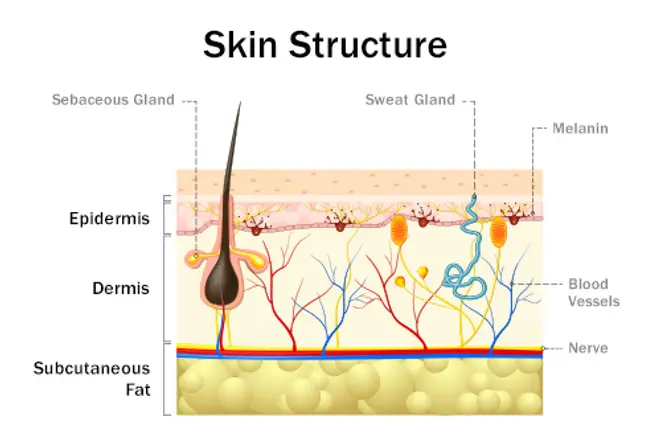
Your Skin
one / 16
Like an onion, your skin has layers. When it comes to infections, usually the deeper it is, the worse it can be. The offset layer (epidermis) makes cells and gives you color. The 2nd (dermis) makes oils to protect the peel and sweat to cool you lot. Its nerve endings help you lot feel oestrus, cold, and hurting. The tertiary layer (subcutaneous fat) attaches pare to muscles and basic, and helps control your temperature.
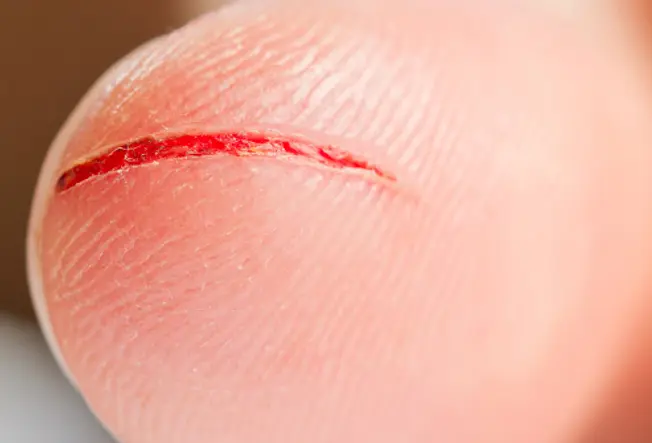
How Does Your Skin Get Infected?
ii / 16
A cut in your peel -- from an injury or surgery, for example -- makes it easier for germs to arrive, and that can atomic number 82 to infection. Viruses, bacteria, and fungi tin all cause them. Leaner are living organisms that are all around y'all. Many are harmless or even skilful for you, merely some can crusade problems. Viruses are tiny particles that can only grow within other living cells. Fungi are living organisms that feed off other living things.
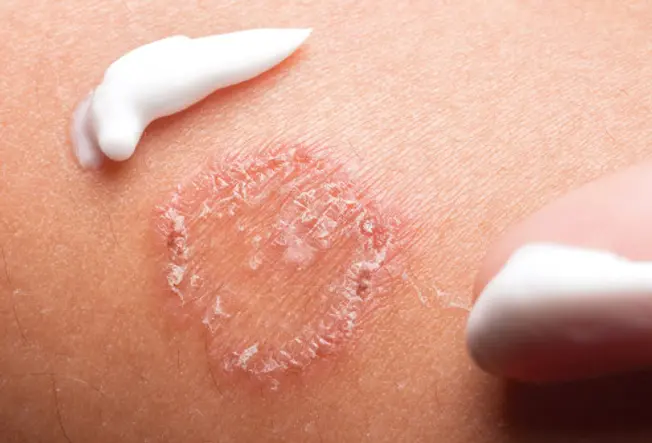
How Are Skin Infections Treated?
3 / 16
Ones acquired by bacteria unremarkably can exist cured with antibiotics, though some leaner have go resistant to the drugs and are harder to kill. Medication or prescription creams tin can stop most fungal infections, and there are several ways to treat viruses. Your md may recommend antiviral medicines, or they might need to remove peel growths. In other cases, your symptoms may go abroad on their ain.
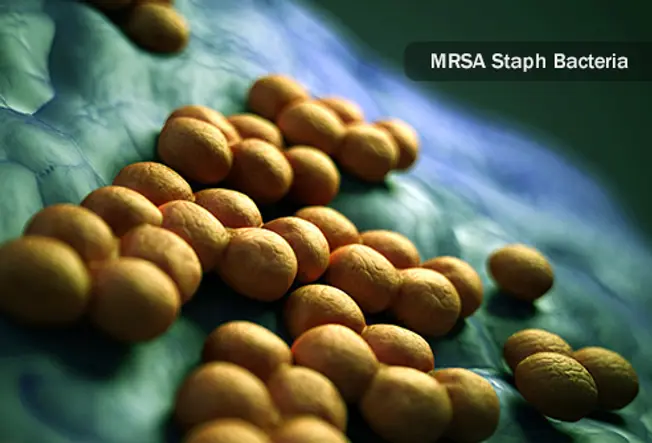
MRSA
4 / 16
Methicillin-resistant Staphylococcus aureus (MRSA) is a bacterial infection that antibiotics don't always stop. Information technology can crusade an abscess -- pus in your tissue. If you have one, your doctor may drain it and not give y'all medicine. People who've been in a hospital or other facility, like a nursing home, are most likely to get MRSA. Those who oft have skin-to-skin contact with others, like wrestlers or child intendance workers, can get it, too.
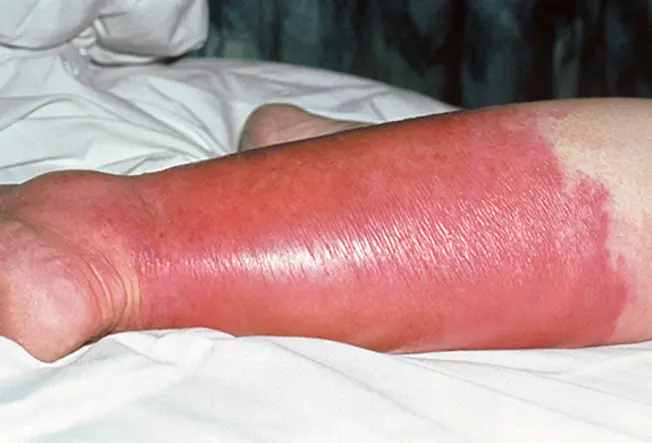
Cellulitis
five / 16
This is a serious bacterial peel infection that happens most oftentimes on your lower leg, but it can be anywhere on your pare. The area may become bloated, hot, and tender. It can be very serious if information technology's in deeper tissue and gets in your bloodstream. If you have red streaks on your skin, fever, chills, and aches, come across your physician right away. In serious cases, you'll demand IV antibiotics -- a needle in your paw or arm that puts medicine into a vein.
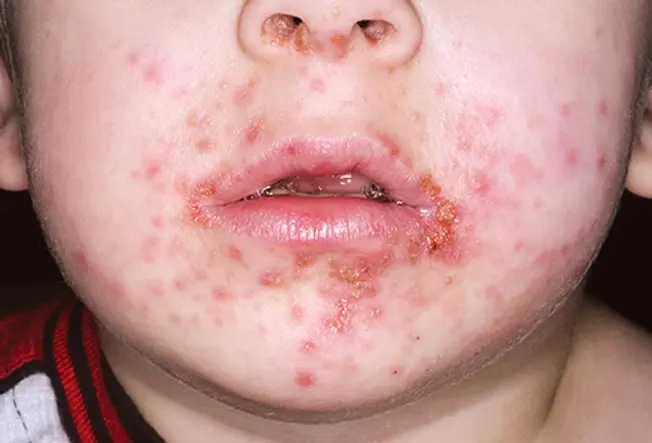
Impetigo
6 / xvi
This is a bacterial infection that's common in preschool and school-age children. It can cause blisters and sores on the face, neck, easily, or diaper area. It oftentimes happens after the pare has been irritated past another trouble like a cut, scrape, or rash. It can be cleared upwards with antibiotics (in ointment, pill, or liquid form).
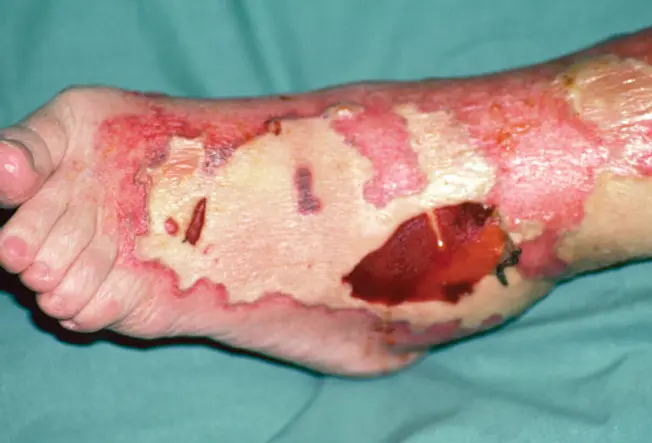
Necrotizing Fasciitis
7 / 16
Also known as flesh-eating bacteria, this is a life-threatening infection that spreads quickly and kills your body's soft tissue (muscle, fat, and other tissue that connects muscles to bones). If you lot're salubrious, have a strong immune system, and breast-stroke or shower ofttimes, you're not likely to get it. If you exercise have it, you'll need antibiotics put directly into one of your veins, and a surgeon will remove the infected tissue.
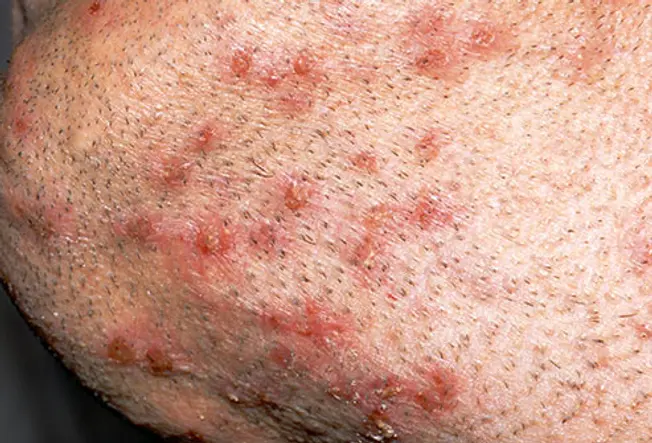
Folliculitis
8 / sixteen
This happens when follicles -- tiny pouches of skin that agree the roots of your hair -- become inflamed and cause crimson, itchy, called-for pare, tenderness, and pain. It's usually brought on by leaner, just fungi and viruses can cause it, likewise. Folliculitis oft goes away on its own, but if it doesn't, your medico may give y'all an antibiotic or antifungal foam.
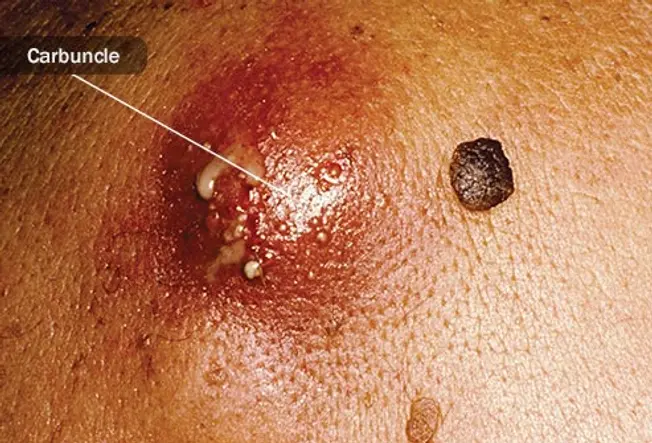
Boils and Carbuncles
9 / 16
A boil is a sore that starts as a red, tender bump, gets more painful equally it fills with pus, and finally bursts. It happens when bacteria infect one or more hair follicles, ofttimes getting in through a cutting or insect bite. A carbuncle is a cluster of boils under your skin. A warm washcloth on the area is usually enough to ease hurting and help boils drain, just if information technology's big, your md may make a small cutting to allow the fluid out.

Herpes
10 / 16
This is typically linked to sores in the genital area in both men and women, caused past a form of the herpes virus (blazon 2). Once you're infected, the virus stays in your body, but it doesn't always cause sores. Your doctor can give you medicine to command outbreaks. Information technology's contagious, so you shouldn't take sex when you lot accept an outbreak. If you practice, tell your partner, and use a condom then you're less likely to pass information technology on.
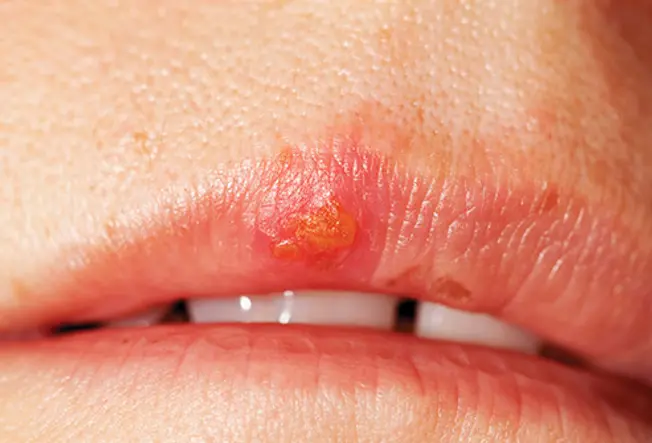
Cold Sores
11 / 16
The type 1 canker virus causes these on your lips or mouth, and they can exist painful and embarrassing. Most people get the virus as children from contact with people who have it. The virus stays in your trunk, and sores may break out when you're sick, anxious, or overtired. They usually go away on their own, but prescription drugs tin help control outbreaks.

Chickenpox
12 / 16
This virus affects your whole trunk and is mainly known for its itchy rash. Most of the fourth dimension, it goes away within a calendar week. Information technology's very contagious, and then if you lot have it, stay abode and rest until it's gone. In one case yous've had chickenpox, y'all won't get it again, only you lot may have an outbreak of shingles later in life -- a painful, itchy rash. Vaccines can make y'all less probable to get chickenpox and shingles, or make you less sick if you practise get i of them.
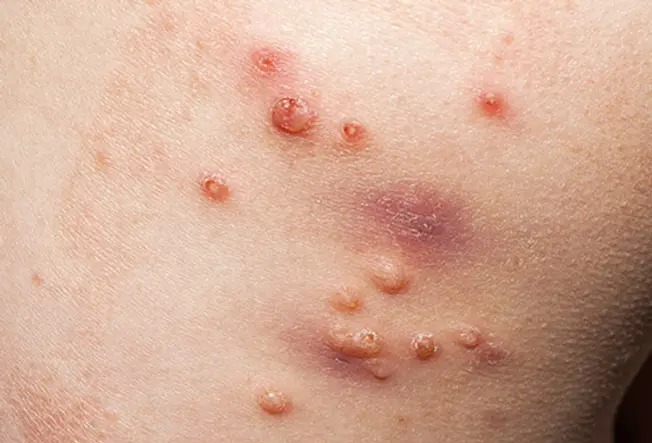
Molluscum Contagiosum
thirteen / 16
This virus causes smoothen, firm, mounds of peel with a dimple in the center, and you lot get information technology from contact with people who have information technology or things they've touched. The itchy, painful sores tin prove upwards virtually anywhere on your body -- every bit small as a pinhead or as big as a pencil eraser. They ordinarily disappear in 6 to 12 months, simply your medico may requite you a cream or propose role treatments that freeze or scrape the nodules away.
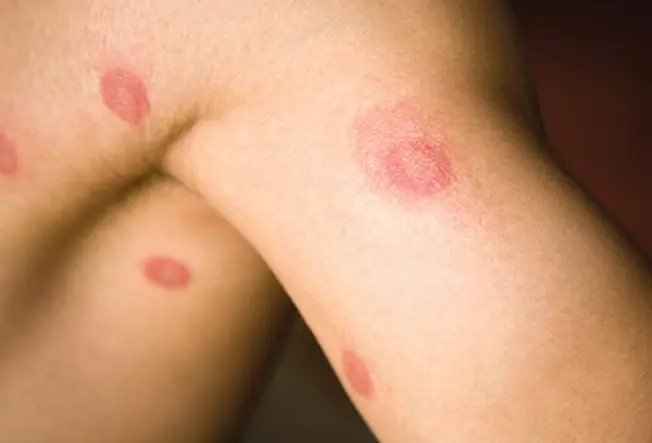
Ringworm
14 / 16
This fungal infection causes reddish, itchy, ring-shaped rashes on the elevation layer of your skin. It can show up anywhere on your torso, and it's very contagious. Many types of fungi tin can cause it, and they're all around you. They can live on your skin every bit well as on floors, countertops, clothing, towels, and bedsheets. A number of antifungal creams, sprays, and pills tin get rid of the infection, just it sometimes comes back in problem areas.
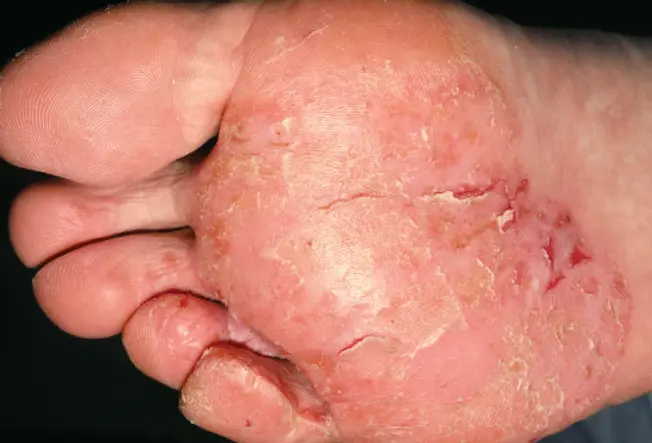
Athlete'south Pes
15 / sixteen
The aforementioned types of fungi that cause ringworm tin can crusade this, too. It often shows up on the bottom of your feet and between your toes, where it's dark and moist. Information technology can make them itchy, dry, and cracked, and can sometimes cause bleeding. Many locker room floors are covered in information technology, so use prophylactic flip-flops at the gym -- and make clean them oft. Go on your feet make clean and dry out to keep information technology from coming dorsum.

Pare Parasites
16 / 16
Tiny creatures can burrow into your skin and feed or lay eggs, which can cause red, irritated, itchy pare. Lice are common parasites, especially in children. They bear on the scalp and laissez passer easily from person to person. Other skin parasites are mites (scabies) and hookworm, called "creeping eruption." Special creams, lotions, or shampoos can get rid of them, and they don't often cause long-term bug.
IMAGES PROVIDED By: 1) ttsz / Thinkstock ii) PobladuraFCG / Thinkstock 3) rank600 / Thinkstock iv) Eraxion / Thinkstock 5) SPL / Science Source 6) SCOTT CAMAZINE / Getty Images 7) Dr. Kenneth Greer / Thinkstock 8) Allan Harris / Medical Images 9) Watney Collection / Medical Images ten) Luis M. de la Maza / Medical Images 11) dabjola / Thinkstock 12) abdone / Thinkstock 13) Dr. P. Marazzi / Science Source 14) alejandrophotography / Getty Images 15) Dr. P. Marazzi / Scientific discipline Source sixteen) Eye of Science / Science Source SOURCES: American Academy of Dermatology: "The layers of your pare," "Scabies." CDC: "Genital Herpes - CDC Fact Sheet," "Necrotizing Fasciitis: A Rare Disease, Specially for the Healthy," "Ringworm." John Hopkins Medicine: "Parasitic Infections of the Skin." Mayo Clinic: "Molluscum Contagiosum," "Cellulitis," "Folliculitis," "Boils and carbuncles," "Shingles." Nemours Foundation: "Impetigo," "Chickenpox," "Ringworm." Stanford: "Skin and Soft Tissue Infections in the Inpatient Setting." Show Sources
How Do You Know If You Have A Skin Infection,
Source: https://www.webmd.com/skin-problems-and-treatments/ss/slideshow-skin-infections
Posted by: spauldingletly1953.blogspot.com


0 Response to "How Do You Know If You Have A Skin Infection"
Post a Comment